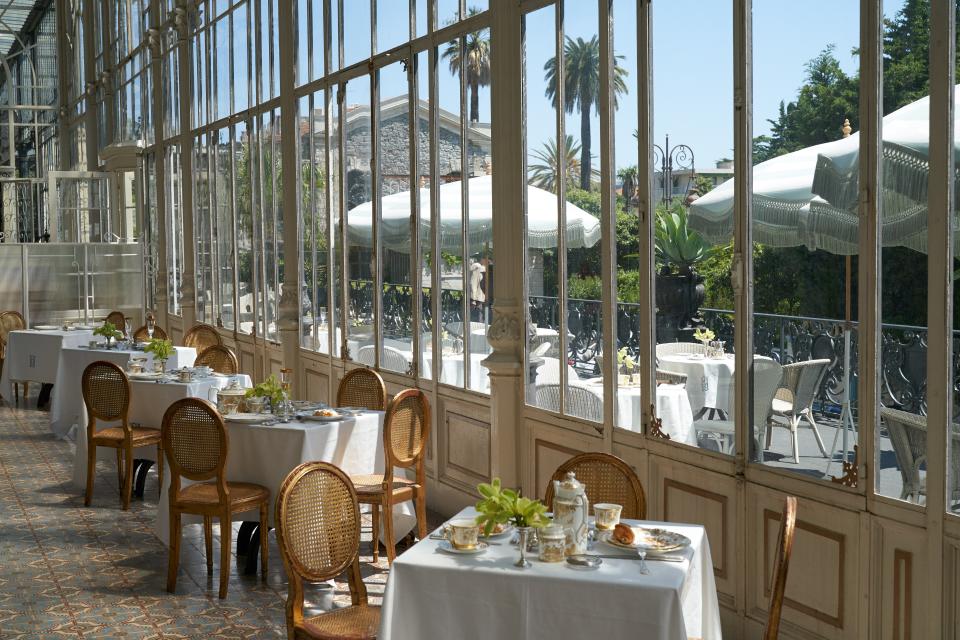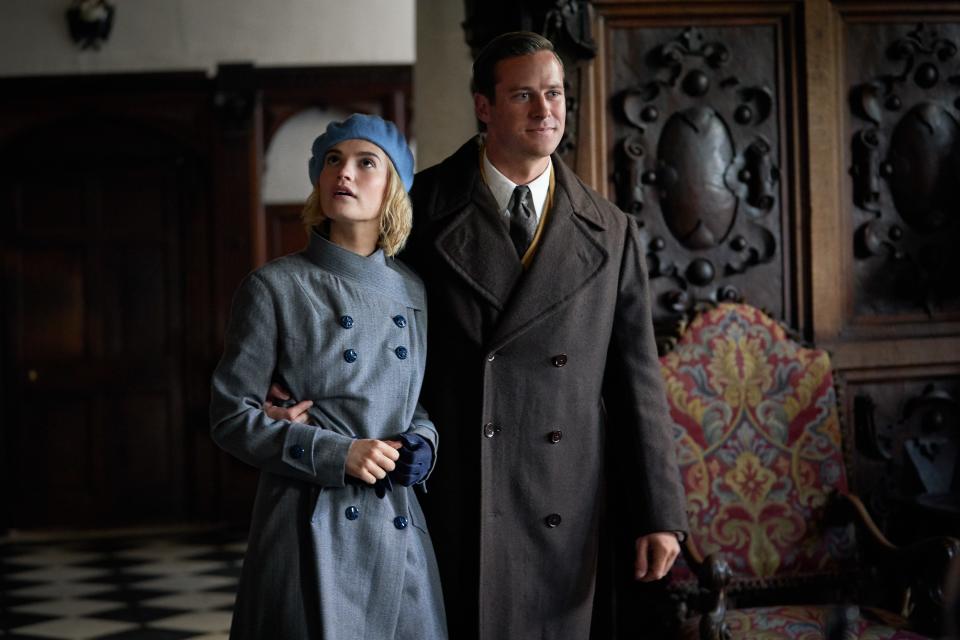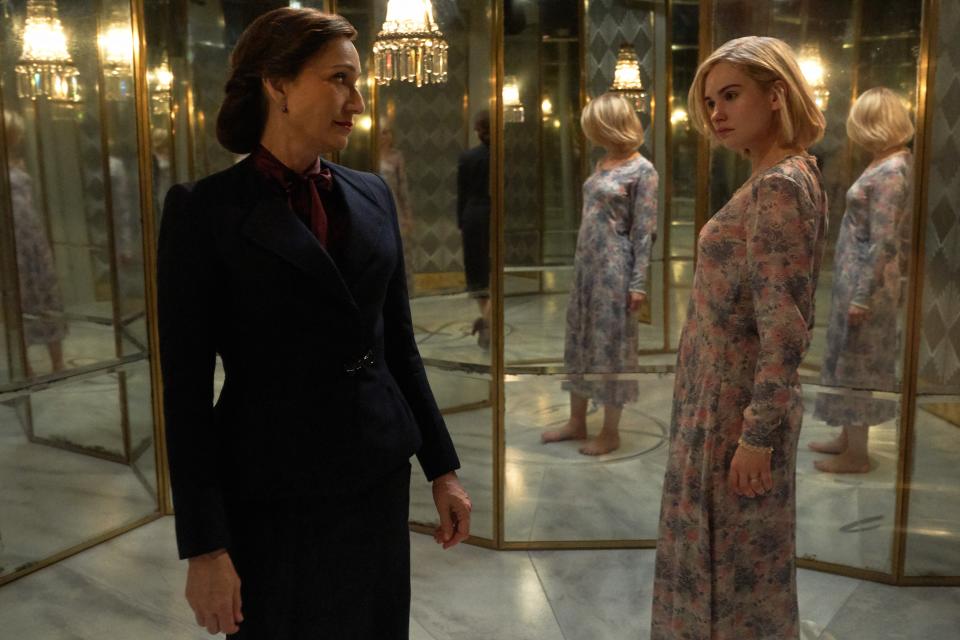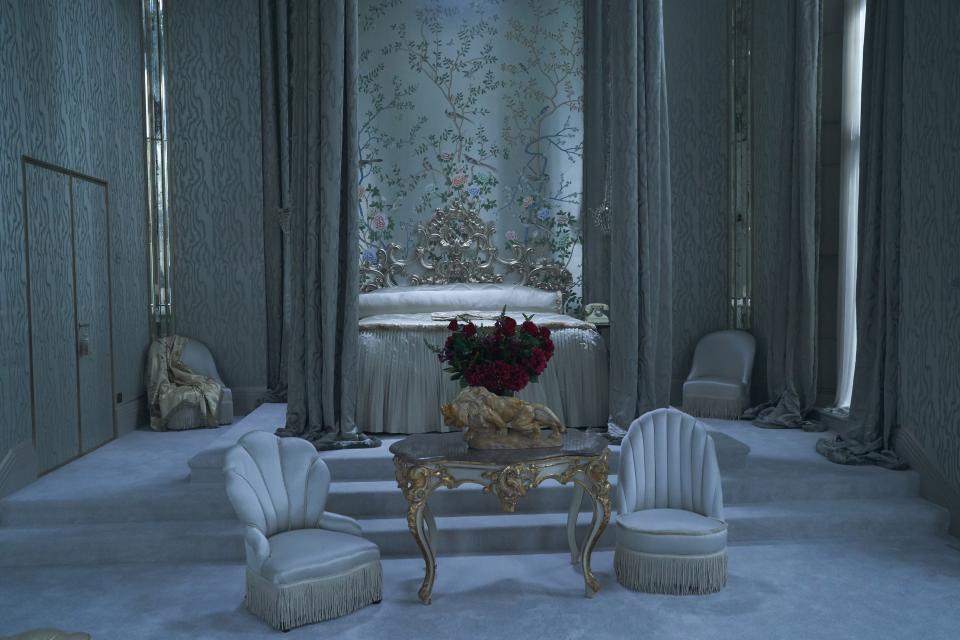Rebecca Takes Place in the Ultimate English Estate
The crux of the criticism against the new Netflix adaptation of Rebecca is that the film starring Lily James and Armie Hammer simply doesn’t live up to its predecessor, the 1941 best-picture winner directed by Alfred Hitchcock, produced by David O. Selznick, and starring Laurence Olivier and Joan Fontaine. This is true. It is also the theme of the story. The titular Rebecca was the first wife of Maxim de Winter (Hammer), and after her death, her presence still lurks in every corner of his estate, Manderley, even when he brings home a new wife (James) from a whirlwind summer romance in Monte Carlo.

Though Rebecca is not alive, she’s still a major character in the story, and so is the house. In fact, both are perhaps more dynamic than Maxim or the second Mrs. de Winter. The original 1938 novel by Daphne du Maurier famously begins with the line, “Last night I dreamt I went to Manderley again,” as do both films, and the action would simply not work in anything less than a grand, opulent residence that borders on haunted. In a bit of movie magic, the Hitchcock version was filmed at the former Selznick International Studios in Culver City, California, (Gone With the Wind was as well) though the fictional Manderley is located on the coast of Cornwall, England.

REBECCA
This time around, production designer Sarah Greenwood and set decorator Katie Spencer (both of whom are six-time Oscar nominees) took a different approach, filming on location at eight different homes and estates in England. If that seems like a lot of different places to stitch together in post-production, it was, but that was not as much of a challenge as you may think. “Normally a very important part of our job is to give geography to a place,” Greenwood tells AD. “But in fact in this instance it was kind of about breaking the geography.” Mrs. de Winter (her first name is not given) never quite gets comfortable in her new home. “She always sort of was finding her way around. In a way, we the audience would also have that difficulty.” And as would have been true of Manderley, the historic dwellings where the film was shot tend to possess an amalgamation of architecture from different time periods. “They all are built on by different generations. You really can get this really kind of incredible disjointed harmony in these houses.”
For exterior shots, they used Cranborne Manor in Dorset, England, which Greenwood says has never been seen on film before and was perfect because it was “slightly gloomy in a funny way even though it was beautiful.” Mapperton House, also in Dorset, was used for its “beautiful kind of sunken garden, which was in fact built in the ’20s,” while Petworth, a 17th-century manor home turned museum where the painter J.M.W. Turner frequently visited and worked, provided a sculpture gallery. For the rocky, foreboding cliffside, they headed for Hartland Quay in North Devon, building the exterior of a mysterious little boathouse (the interior was created in a studio). The bulk of the interiors, like a long corridor leading to Rebecca’s former bedroom suite and a great hall where the de Winters host an ill-fated ball, were filmed at Hatfield House in London, which has been seen in numerous productions including The Favourite. “It just has layers and layers of character and amazing portraiture. In this case you have all these portraits and it’s this idea that she’s being looked at and watched wherever she goes,” says Greenwood.

REBECCA
The most compelling part of the psychological drama is the housekeeper, Mrs. Danvers, played by Kristin Scott Thomas. She’s especially dedicated to making Mrs. de Winter feel unwelcome and preserving the memory of Rebecca, and she even meticulously maintains Rebecca’s bedroom as “a mausoleum,” says Greenwood.

REBECCA
This was built on a set, and has a sort of silvery tone that contrasts against the richer woods and reds of the rest of the house. “We put silk on the walls. It kind of looks like it is underwater, the cold austerity of it,” says Greenwood, and if you watch the film, you’ll see how fitting that treatment really is for the room of the unseen protagonist.
Originally Appeared on Architectural Digest

